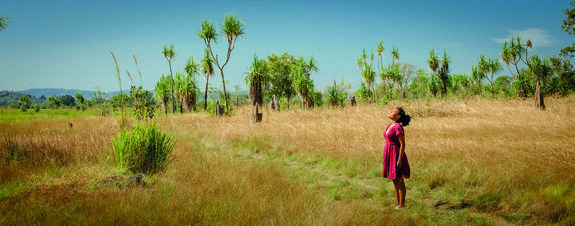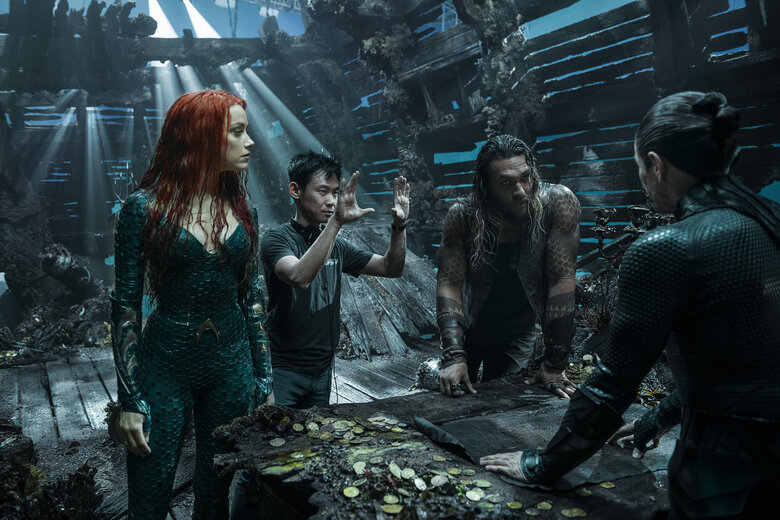
With many local economies depressed in the wake of COVID-19, bushfires and floods, the benefits that film and television production can bring to a region have never been more profound.
As Screen Australia CEO Graeme Mason told last year’s Place Branding Conference, productions have the potential to revitalise communities.
“The screen sector can bring money into your area or your town. We can drive tourism, we can create jobs. We can deliver creative, cultural and economic benefits,” he said.
Already about 250,000 tourists visit or extend their stay in Australia each year as a result of viewing Australian-made content and it drives around $725 million in international tourism spend.

Local productions like Picnic at Hanging Rock and Mad Max were filmed decades ago but are still bringing benefits to Victoria’s Hepburn Shire, while Home and Away has turned Sydney’s already exclusive Palm Beach into a top tourist drawcard.
In Victoria, the adaptation of the Jan Harper novel The Dry, starring Eric Bana, filmed across 17 country towns, spending $11 million in the region and employing 350 locals.
In WA the filming of Mystery Road brought in $5.8 million and Storm Boy added $5.7 million for SA’s Fleurieu Peninsula. Sweet Country spent $1 million in regional parts of NT, around $200,000 of which went to Indigenous businesses.
Now, Australia’s relative success in managing the pandemic means it is also in a unique position to attract a significant pipeline of international screen productions from Hollywood and elsewhere.
Australia is seen as a safe shooting destination – one that also happens to boast diverse locations, world class crew, an A-list roster of actors and a low dollar.
The current opportunity is one the Federal Government has recognised, launching a new $400 million incentive program in July to lure international projects to our shores.
State governments too have recognised the moment, with NSW doling out an additional $175 million to attract production over the next five years, and the Victorian government $19.2 million to be spent by the end of next financial year.

Already the federal program has attracted three back-to-back Universal Studio Group series to Queensland, including Young Rock, a comedy chronicling the high school years of Dwayne ‘The Rock’ Johnson.
These TV shows are due to employ more than 1,000 local cast and crew and 2,000 extras over the next 18 months at Screen Queensland Studios in Brisbane and on location around Queensland, and expected to spend $6.5 million on visual effects services.
Liam Neeson thriller Blacklight is currently shooting in Melbourne, predicted to create jobs for 340 local crew, 825 casuals, cast and extras, 50 post-production professionals and 30 Victorian businesses.
And most recently, the government splashed $21.58 million to lure two Netflix titles to Australia: feature film Escape From Spiderhead, due to shoot on the Gold Coast, and eight-part series Pieces of Her, bound for Sydney.
The expectation is that combined, they will inject around $160 million into the economy and create 770 local jobs.
To help connect Australian local authorities with the international screen sector and take advantage of this moment, Government News’ sister publication INSIDE FILM is launching digital publication Australia: 101.
A basics guide, it will drill down for international producers and executives Australia’s federal and state based incentives, talent pool, infrastructure, diverse locations and showcase businesses and councils keen to collaborate.
WHO IS INSIDE FILM? IF is Australia’s largest and most trusted screen brand. Its suite of products include a leading screen magazine and production directory, websites, subscription newsletters, an app and numerous social media assets. What distinguishes IF from other screen brands is its exceptional access to the most powerful and influential people and organisations.
It showcases emerging talent, production locations and flags projects for investment. IF is about collaboration and driving business outcomes.
IF’s statistics at a glance:
- Average monthly users 65,525
- AU traffic 63%
- US traffic 18%
- NZ/South East Asia traffic 12%
- UK traffic 7%
Forty per cent of IF’s traffic originates from overseas markets. Australia: 101 will be distributed to this extensive international database, helping connect your region to international productions.
To find out more and to be a part of the guide, contact Mark Kuban or Cameron Boon.
Comment below to have your say on this story.
If you have a news story or tip-off, get in touch at editorial@governmentnews.com.au.
Sign up to the Government News newsletter